In this section you will see just how easy it is to take pictures that show realistic three dimensional (3D) images.
The pictures can be viewed in three ways: by crossing your eyes, by focussing you eyes at infinity (called the 'parallel' method because the two lines of sight are parallel), and with an inexpensive (or homemade) 3D viewer.
The viewer is nice because it takes a little practise to see the images with the first two methods, and most people find the viewer easier and more comfortable.
Taking the pictures
This is actually the simplest part. You can use any camera you have available. Just take a picture, then move the camera to the side a little bit, then take another picture. That's all there is to it.
I like to use a tripod, but some people just shift their balance from one foot to the other for each shot.
The next step is to place the two pictures next to one another and cross your eyes to see the 3D view. For cross-eyed viewing, the picture that was taken from the right side goes on the left, and the picture taken from the left side goes on the right.
If you have an instant camera, the pictures (of course) can be viewed right away. I like to use a digital camera, because the pictures are higher quality, and I can still see them right away on the screen.
Even if you use a standard film camera, the pictures can be digitized on a scanner (either at home or through the services of your film processing company) and then pasted together to be viewed on the screen or printed on a color printer.
To view cross-eyed, keep the pictures at a distance where you can comfortably focus on them. Slowly cross your eyes until instead of two pictures, you see three. The center picture will be in 3D.
It takes some practice. If you find yourself straining your eye muscles, you may be trying to focus on the air between you and the pictures, where your eyes are aiming. Relax, and try again, letting your eyes focus on the pictures, but cross so the left eye sees the right picture, and the right eye sees the left.
Once you get the hang of it, you can do it comfortably right away, and can view the pictures as long as you like, shifting your gaze from items in the foreground to items in the background effortlessly. The 3D effect is stunning, not only because of the stereo effect, but because there is twice as much information getting to your brain. It is almost like being there.
In the pictures below, start with the smallest ones, and only go on to the larger versions when you can comfortably get the 3D effect. Sometimes it helps to start farther away, and move closer only when your eyes are properly positioned and you can see the 3D effect.
Cross your eyes to view these images in stereo 3D
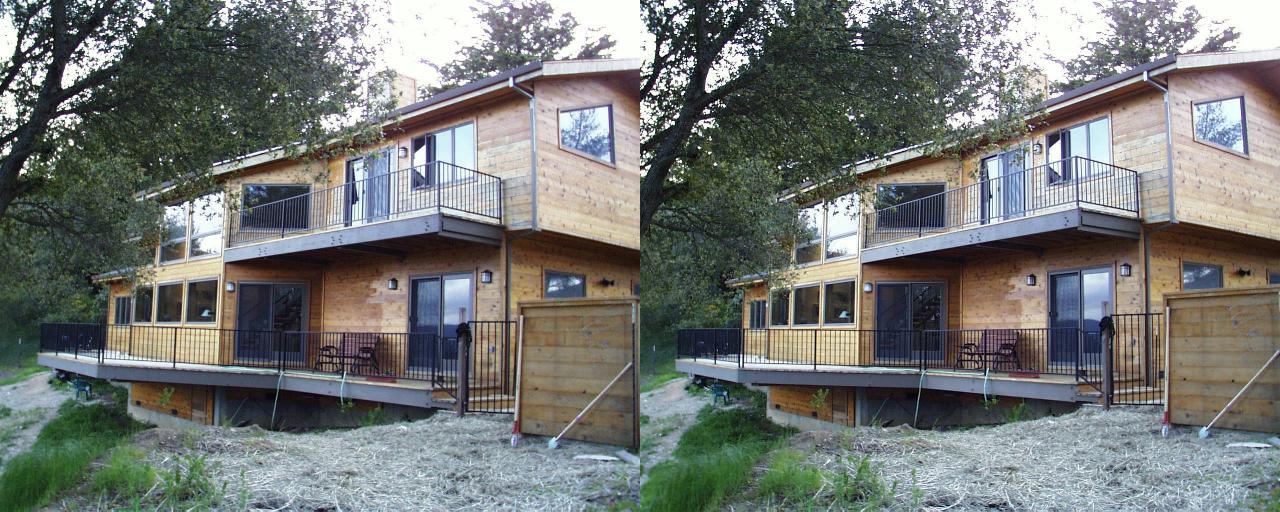
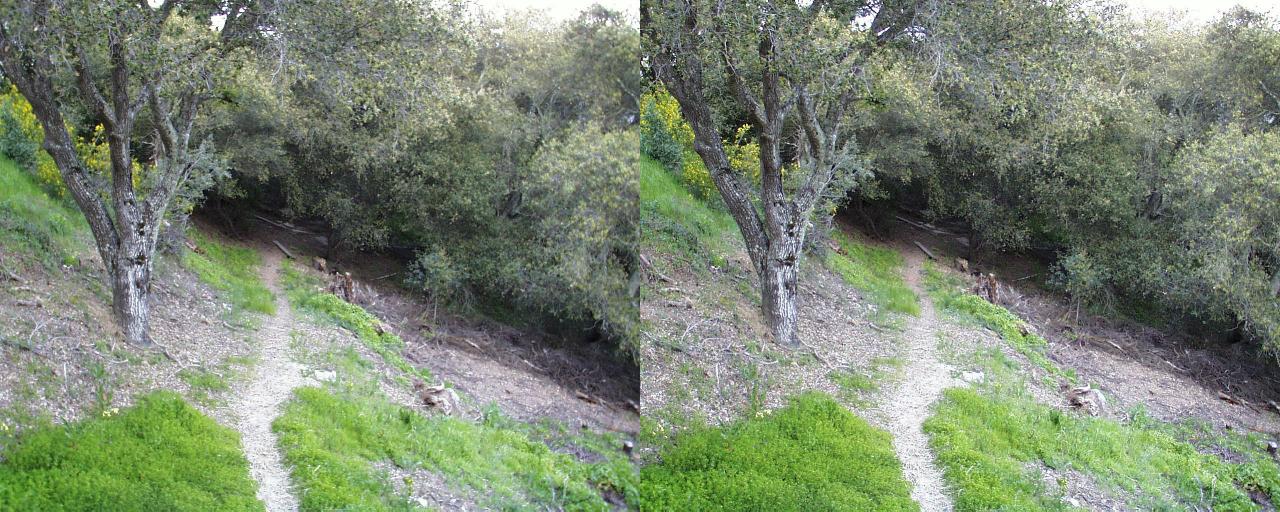
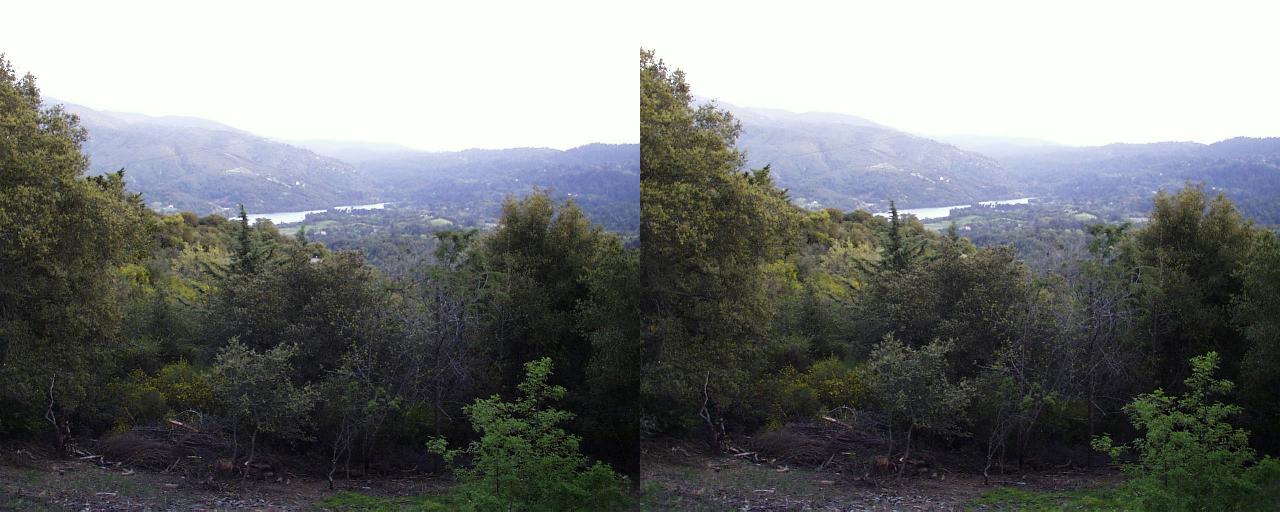
Some people find it easier to aim their eyes at infinity rather than to cross them. Because two light rays coming from infinity are parallel when they reach your eyes, this method is called the 'parallel' method.
The problem with the parallel method is that the pictures must be the width of the distance between your eyes. That's not very big, and that limits the detail you can get on a computer monitor. It is less of a problem with photographic prints (since they contain a lot more detail per square inch than a computer monitor).
For parallel viewing, the pictures are reversed from cross-eyed viewing. The picture taken from the right is on the right, and is viewed by the right eye.
In the photos below, find the size that makes the pictures on your monitor close in width to the distance between your eyes. Then relax, and let your eyes drift through the pictures as if they were viewing a mountaintop far in the distance. You will gradually be able to see three pictures as with the cross-eyed method, and like then, the center picture will be in 3D.
For me, it sometimes helps to get very close to the screen, so the pictures are very blurry. This makes it so that each eye is very definitely looking at a different picture. Then, when I have a blurry 3D image, I slowly back away from the screen until it comes in focus, being careful not to lose the 3D sensation. When you are very close to the screen, it will look like the two pictures have merged into one. As you back away, you will be able to see the other two pictures flanking the 3D center image.
View these pictures with eyes parallel (looking at infinity)
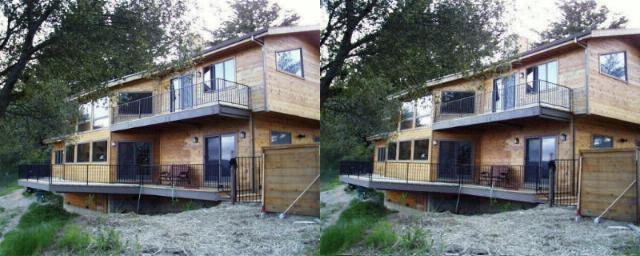

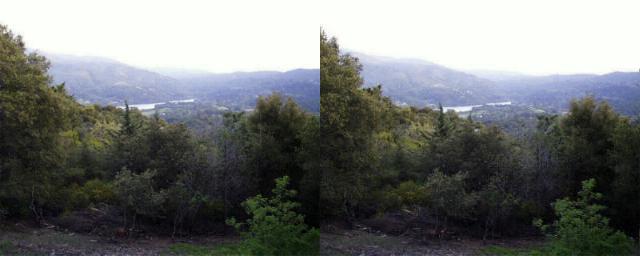
All of these photos so far have been done with the 'hyper-stereo' technique, where the camera positions are separated by more than the distance between the eyes. For true stereo, try holding your head completely still (rest it against a wall for example), and hold the camera up to one eye for the first shot, then up to the other eye for the second shot. These 3D images will work well for objects that are nearby, and will not give the exagerated 3D for distant objects that you see in the images of the lake in the photos above.
For very close-up objects, you can move the camera by less than the distance between your eyes. Now, instead of seing the 3D effect behind the plane of the picture, the image seems to float in mid-air between you and the screen or paper. For this to work well, you may need a special close-up lens on your camera. However, sometimes just shooting the picture with a magnifying glass taped over the camera sun shade will give very good results.
If you do want to play with the hyper-stereo effect, remember that the brain finds it easiest to see 3D images if the distance from the camera to the object is 30 times the distance between to two camera positions. If an object is 30 feet away, the camera position for the second shot should not be more than 1 foot from the position of the first shot.
The pictures below are done in true stereo, holding the camera first to one eye, then to the other. The subject is the treehouse bridge between two trees in my yard. It is 70 feet long and 45 feet above the ground. You can see a little bit of my house in the background in one of the pictures.
Cross your eyes to view these images in stereo 3D
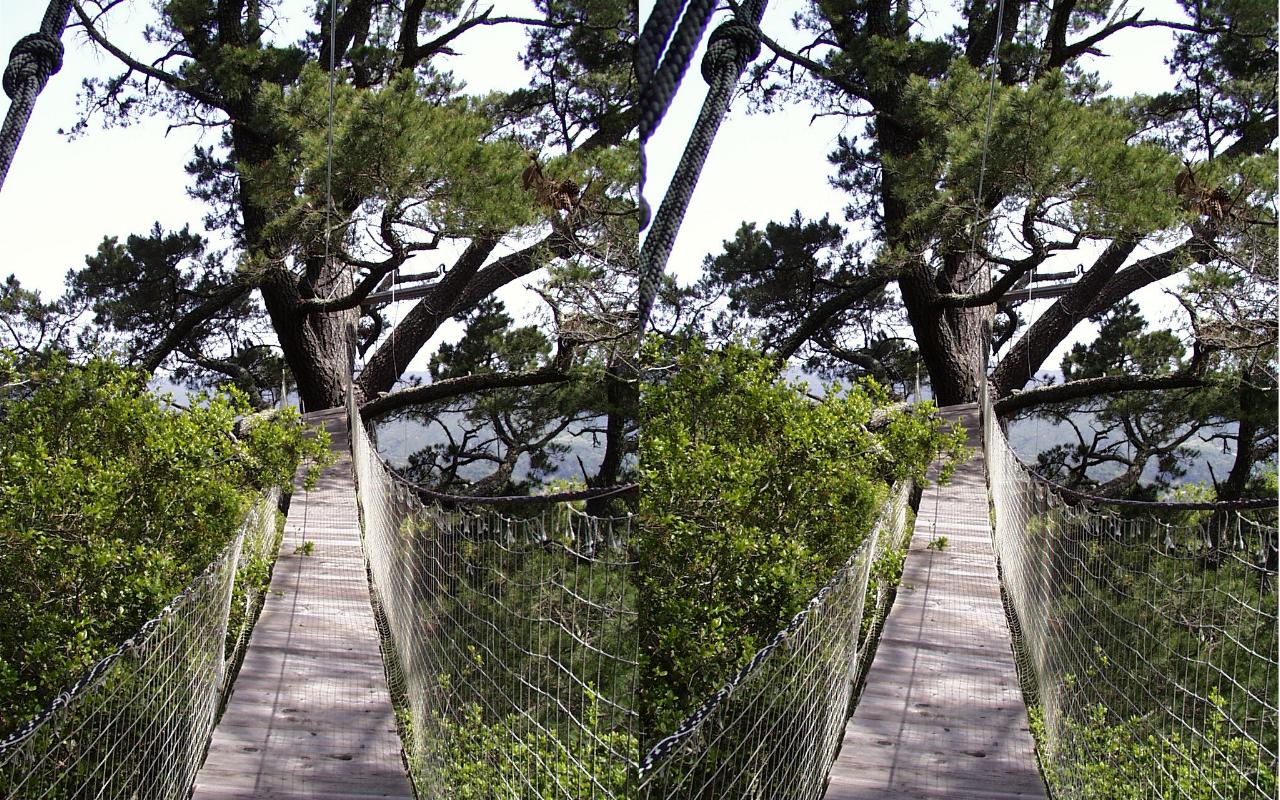
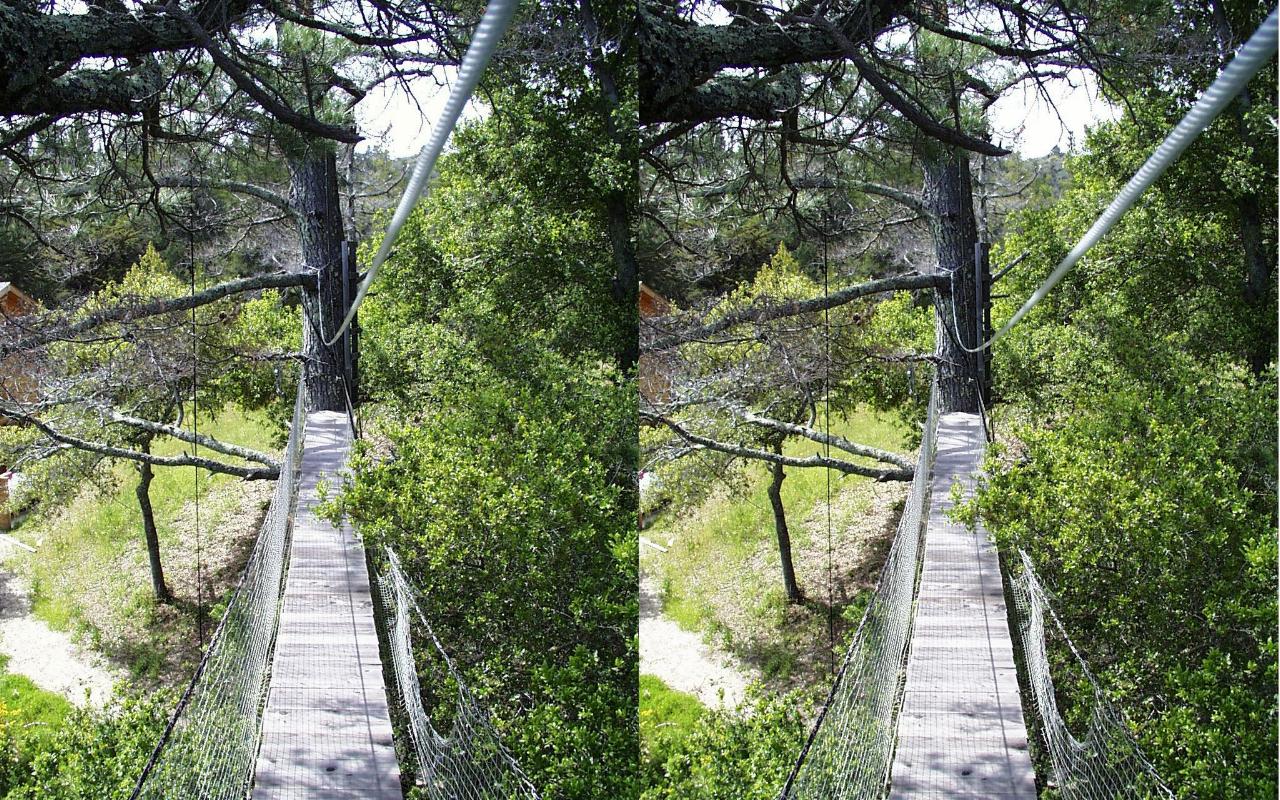
View these pictures with eyes parallel (looking at infinity)
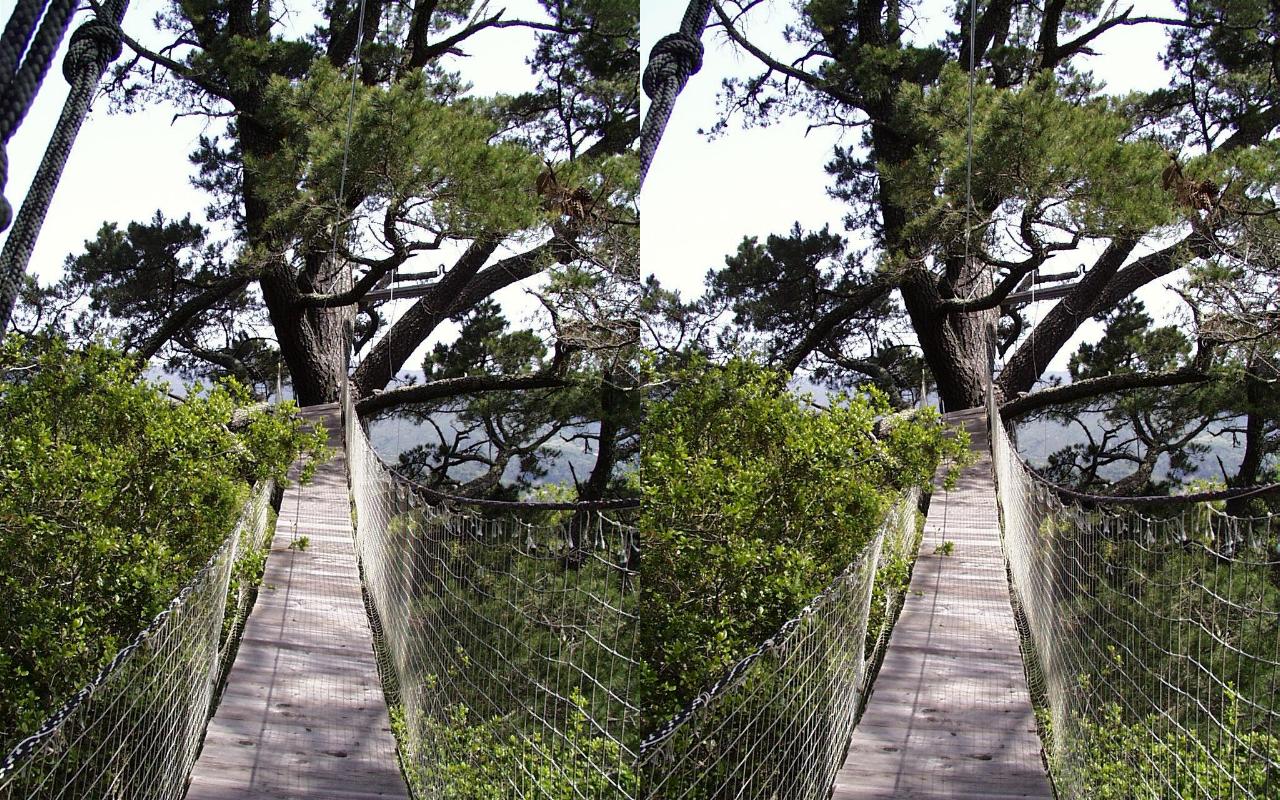
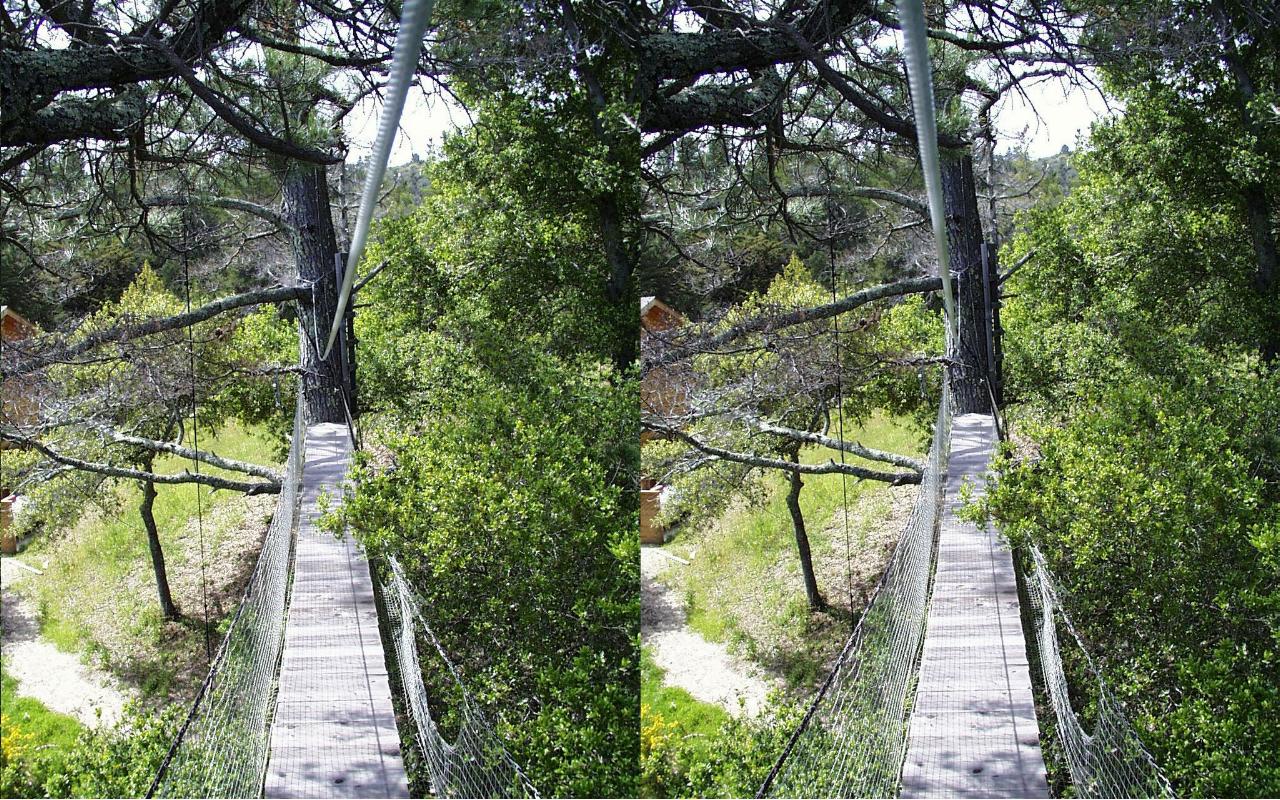
Remember, for the parallel viewing, each half of the picture must be about as wide as the distance between your eyes. A little smaller is usually OK, but bigger won't work. I am including some big images just in case you have a remarkable computer monitor, or you wish to print the pictures out and view them with a viewer.
Using a viewer to see the pictures
There is an inexpensive viewer available in the form of Google Cardboard. Normally used to view 3D images and video from a cellular phone, you can place your own printed images where the cellphone would be to see them in full 3D. Of course you can also use the same photography tricks shown above to make images on your phone that work with Google Cardboard, so you don't have to print them.
The viewer is a simple pair of plastic prisms (with a bit of magnification also) in a folding cardboard holder that keeps the pictures at the proper distance. The prisms make it easier for your eyes to view parallel format stereograms.
You can use the viewer to view pictures directly from the computer screen, or you can place your own pictures next to one another in the viewer. I print out mine on a good color printer on premium paper. The trick is simply to tell the printer to print the stereogram so it is the width of a cellphone.
If you are having your own photographs printed for you, have them printed 3 inches wide, so the stereogram will be 6 inches wide when they are side by side.
It is a little difficult to build this kind of viewer yourself. The magnification is not strictly necessary, so the viewer can be made by putting a small wedge prism in front of each eye.
These prisms can be made by sanding and polishing small pieces of clear plastic, but this takes some skill. Another way to make a viewer is with small circular mirrors. The mirrors are oriented 90 degrees from each other, and separated by the same distance as your eyes. When you look into the mirrors, the left eye will be looking left, and the right eye will be looking right.
The pictures are not stuck together in this viewer, but are placed near the operator's shoulders, the left view on the left, and the right view on the right. Such a viewer is more cumbersome to use than Google Cardboard, but it is easier to explain to a younger child how it works, and being home-made, it might make a better science fair project.